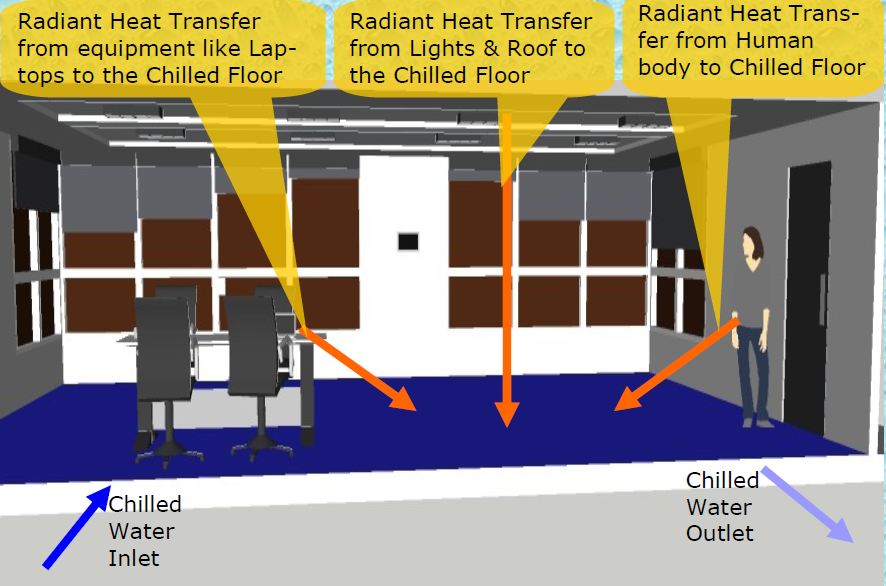How Does Radiant Cooling Work?
A radiant cooling system is a temperature-controlled surface that cools indoor temperatures by removing sensible heat and where more than half of heat transfer occurs through thermal radiation. Heat will flow from objects, occupants, equipment and lights in a space to a cooled surface as long as their temperatures are warmer than that of the cooled surface and they are within the line of sight of the cooled surface. The process of radiant exchange has a negligible effect on air temperature, but through the process of convection, the air temperature will be lowered when air comes in contact with the cooled surface.
Radiant cooling cools a floor or ceiling by absorbing the heat radiated from the rest of the room. When the floor is cooled, it is often referred to as radiant floor cooling; cooling the ceiling is usually done in homes with radiant panels. Although potentially suitable for arid climates, radiant cooling is problematic for homes in more humid climates.
Most radiant cooling applications have been based on aluminum panels suspended from the ceiling, through which chilled water is circulated. To be effective, the panels must be maintained at a temperature very near the dew point within the house, and the house must be kept dehumidified. In humid climates, simply opening a door could allow enough humidity into the home to allow condensation to occur.
The panels cover most of the ceiling. In all but the most arid locations, an auxiliary air-conditioning system will be required to keep the space’s humidity low.
Structures built on concrete slabs are prime candidates for radiant cooling systems, and radiant ceiling/floor cooling takes advantage of the same principle using chilled water.
Click here to know more about Types of Radiant Cooling Systems

